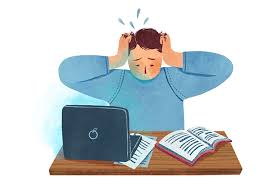
Bright Light Therapy Proves Effective for Treating Nonseasonal Depression, Study Finds
Bright light therapy (BLT), typically associated with managing seasonal affective disorder, is emerging as a powerful tool in the treatment of nonseasonal depressive disorders as well. A recent review published on October 2 in JAMA Psychiatry reveals that BLT significantly improves remission and response rates when used as an adjunctive treatment for nonseasonal depression.
The study, led by Artur Menegaz de Almeida from the Federal University of Mato Grosso in Sinop, Brazil, involved a comprehensive meta-analysis of 11 clinical trials. The research encompassed data from 858 patients, 75.6 percent of whom were women. The analysis aimed to evaluate the effectiveness of BLT in enhancing treatment outcomes for individuals with nonseasonal depression.
Promising Results Across Multiple Studies
The findings show that patients who received BLT experienced notably higher rates of remission and response compared to those who did not undergo light therapy. Specifically, the remission rate in the BLT group was 40.7 percent, nearly double that of the control group, which stood at 23.5 percent (odds ratio, 2.42). Similarly, response rates were significantly better, with 60.4 percent of BLT patients responding favorably to treatment, compared to 38.6 percent in the control group (odds ratio, 2.34).
Accelerated Treatment Response
In addition to overall improvements in treatment outcomes, the study highlighted the potential of BLT to accelerate response times. A subgroup analysis based on different follow-up periods showed that patients treated with BLT exhibited quicker remission and response rates, particularly in the early stages of treatment.
For patients monitored for less than four weeks, the remission rate with BLT was 27.4 percent compared to just 9.2 percent in the control group (odds ratio, 3.59). Response rates in this short-term group were also markedly higher for BLT patients—55.6 percent versus 27.4 percent in the control group (odds ratio, 3.65).
Even in longer follow-up periods exceeding four weeks, BLT continued to demonstrate its efficacy, with remission and response rates of 46.6 percent and 63.0 percent, respectively, compared to 29.1 percent and 44.9 percent in the control group.
Implications for Depression Treatment
The study’s results suggest that BLT is not only effective as an adjunctive treatment for nonseasonal depression but may also hasten the time to recovery.
“Our study results suggest that BLT offers significant benefits as an adjunctive treatment for these conditions,” the authors noted. “In addition, different follow-up times assessed in the subgroup analysis suggest that BLT not only increases remission and response rates but also accelerates the time to respond to initial treatment.”
These findings pave the way for a broader application of BLT in clinical settings, potentially offering a non-pharmacological, low-risk option for enhancing the effectiveness of existing depression treatments. Given the growing need for diverse and accessible treatment modalities in mental health care, BLT presents itself as a promising candidate for integration into standard treatment protocols for depression.
The Path Forward: Integrating BLT into Practice
While more research is needed to further refine BLT protocols and establish its long-term benefits, the current evidence supports its inclusion as a complementary treatment for individuals struggling with nonseasonal depression.
As mental health professionals continue to seek innovative ways to address the complex nature of depressive disorders, bright light therapy could become a valuable addition to the therapeutic toolkit, offering new hope to patients seeking faster and more effective relief from their symptoms.